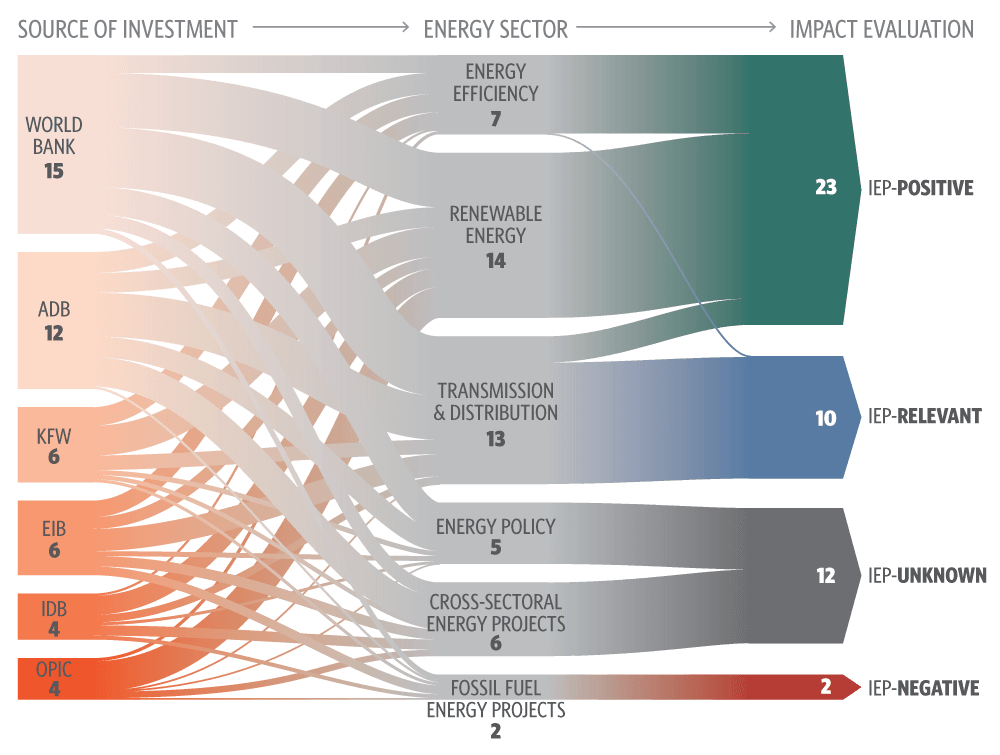This brief compiles key lessons observed by Climate Policy Initiative (CPI) in original, peer reviewed reports and briefs published in 2015 and 2016. For over five years, CPI has documented, assessed, and designed a range of public finance interventions and inventions that aim to boost low-carbon, climate-resilient investment, especially in developing countries. This brief brings together lessons of how governments and public finance institutions can reduce risks and costs and thus attract green investment including by:
- Identifying the key gaps that public policies and resources can address in order to drive green investment from the private sector
- Providing insights on how effective fiscal policy design in Indonesia could incentivize more productive and sustainable forms of land use
- Sharing lessons learned in Kenya on how national governments and development finance institutions can leverage private investment
- Revealing the process of developing innovative financial instruments to address persistent barriers to private investment through public-private partnerships such as the Global Innovation Lab for Climate Finance and the India Innovation Lab for Green Finance and discussing specific instruments
Key lessons include the following.
Adjusting fiscal policy can encourage more productive land use
- Lesson 1: Taxing production area rather than production volumes or profits may encourage adoption of new methods and more sustainable and efficient agriculture, achieving higher productivity per hectare.
- Lesson 2: Introducing sustainability indicators into tax holiday eligibility criteria, for example, or linking tax rates to sustainability criteria, could also reward environmentally sustainable behaviour and decision making.
- Lesson 3: Reallocating tax revenue to local governments with land management decisions could encourage a shift away from agriculture based upon land expansion.
- Lesson 4: Governments can improve incentives for sustainable land use by linking regional and local governments’ access to revenue support to performance standards that require them to implement sustainability programs, demonstrate financial accountability, and social benefits.
National governments and development finance institutions can work together to leverage private investment
- Lesson 5: Novel government approaches and actions can be crucial to address fundamental risk barriers and unlock finance that would otherwise prevent private developers from investing in some developing countries.
- Lesson 6: Well-designed Power Purchase Agreements can include government-backed assurances such as letters of credit and letters of comfort, which can prove crucial to unlock the long-term debt finance needed to develop large projects.
Public-private initiatives like the Global Innovation Lab for Climate Finance and India Innovation Lab for Green Finance can develop innovative solutions to persistent investment barriers
- Lesson 7: Targeted consultations between public and private actors can encourage identification of particular barriers, and support the prioritization of bespoke solutions that address real risks, costs and knowledge barriers.
- Lesson 8: Crowdsourcing ideas to overcome investment barriers helps illustrate where risks and gaps exist across value-chains, and where action should be prioritized.
- Lesson 9: Innovative climate finance solutions may need additional assistance to incubate their development and accelerate their implementation. During this time additional benefits such as socialization, exposure to new technologies and geographies, endorsement, outreach about the potential short and long-term rewards of such approaches, can help refine ideas and introduce solution proponents to potential partners and funders.
- Lesson 10: A flexible and responsive model allows public and private partners to redirect resources to prioritize emerging challenges, take advantage of opportunities within a meaningful time frame, and tailor support to investors and proponents’ needs.
- Lesson 11: Instruments to guarantee the promised savings from energy efficiency investments can address viability and risk gaps by assuring investors of their returns.
- Lesson 12: Globally, a significant gap in adaptation finance exists. There are opportunities to increase private investment in climate-smart agriculture, including in small-scale agriculture businesses, where knowledge, risk and viability gaps prevent the uptake of climate-smart practices. Public-private instruments can incentivize this by addressing knowledge gaps and de-risking investments.
- Lesson 13: A currency hedging solution, developed in a public-private partnership, can help address foreign exchange risk, reducing the cost of renewable energy and making it more competitive.
- Lesson 14: Markets sometimes lag behind innovative business models even when they are commercially viable. Exposure to new potential investors through targeted marketing can open up new opportunities, helping to accelerate investment and make up lost ground.


